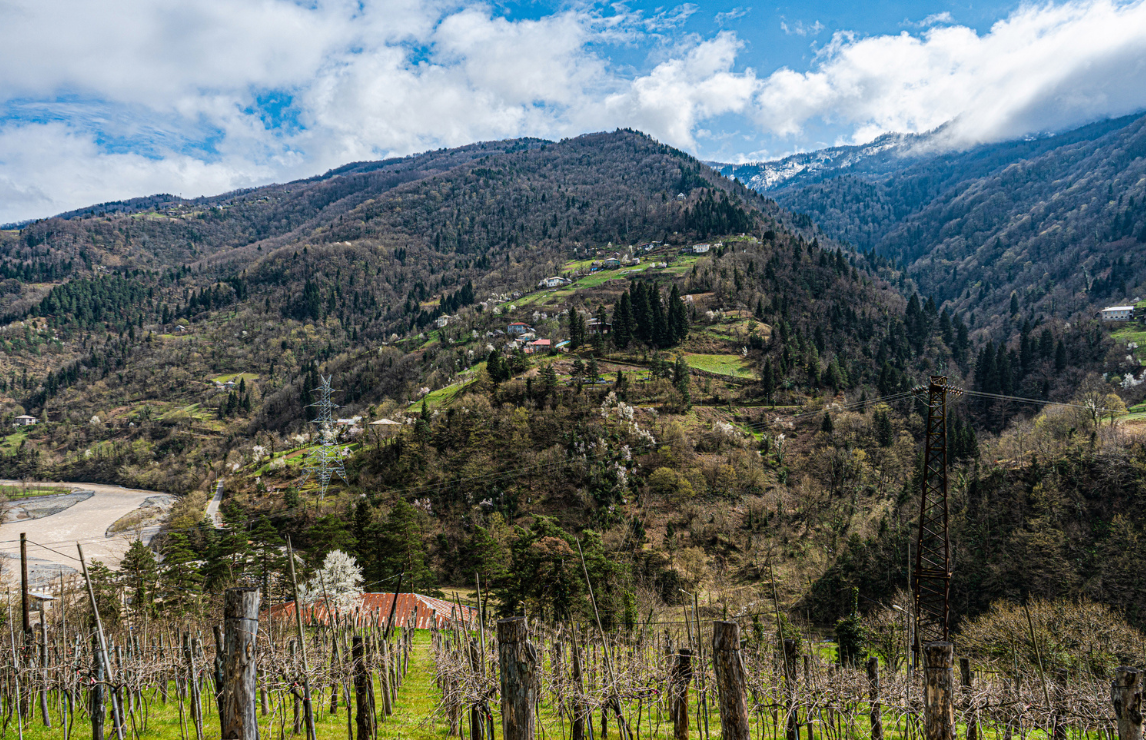Discovering Georgian Wines and their Varied Terroirs
The IWSC is returning to Georgia in November to kick-start our 2026 awards season with Georgian wine and spirit judging in Ajara in Southwestern Georgia.
The country’s wines offer significant opportunities, aligning with current consumer interest in authentic, heritage products. This is demonstrated by the many indigenous grape varieties and a distinctive winemaking approach that leads to high-quality wines with genuine stories behind them.
Georgian Legacy
In Georgia, wine plays a central role in daily life, hospitality, and celebration. It is an integral part of Georgia’s renowned gastronomy and is irrevocably intertwined with the country’s history and culture. UNESCO recognised this importance when it designated Qvevri, Georgia’s iconic vessel used for wine fermentation, ageing, and storage, as a unique tradition requiring preservation.
We will discuss Qvevri in our next blog. For now, we explore some of Georgia’s key wine regions and their terroirs.
Kakheti: Georgia's Viticultural HeartWhen we talk about Georgian wine, we must begin with Kakheti. It's the region that has helped define the country's winemaking identity, accounting for over 70% of its production.
Located in eastern Georgia, Kakheti's terroir is shaped by the Caucasus Mountains to the north and the Gombori Range to the south, which create a protective corridor. The majority of the region’s vineyards are in the Alazani River Valley, on fertile alluvial soils. Additionally, vines grow on a complex mix of calcareous clays, black shale, and gravel. This geological diversity, coupled with a warm, humid subtropical climate, provides the ideal conditions for its most important grapes.
For red wines, Saperavi is the region’s signature variety. It produces deep, full-bodied wines with a robust tannic structure that can age for decades. For whites, Rkatsiteli and Mtsvane Kakhuri are the stars. However, it is the traditional amber wines that truly set Kakheti apart. Made in a Qvevri, large clay vessels buried underground, this style has become a global benchmark for authentic Georgian winemaking.
Kartli: Bridging East and WestKartli acts as a link between the eastern and western winemaking traditions of Georgia. Located in the country’s centre, its vineyards are nestled in the basins of the Mtkvari, Liakhvi, and Ksani rivers, with elevations ranging from 450 to 700 metres. The surrounding mountains shield the vines from colder air, creating a moderately humid subtropical climate with a slight continental influence.
The soils here are varied, encompassing a tapestry of brown and alluvial soils, and sandstone and clay. This mix imparts a distinctive minerality and structure to the wines. While you’ll still find traditional Qvevri wines, Kartli is particularly known for its elegant still wines and quality sparkling wines, with the Atenuri PDO being a prime example. The main white grapes are Chinuri and Goruli Mtsvane, whilst for reds Tavkveri and Shavkapito dominate. The resulting wines are typically fresh, medium-bodied, and beautifully balanced with vibrant acidity.
Ajara: Georgian New WaveAjara is situated in southwestern Georgia on the Black Sea. It’s one of the wettest regions in the Caucasus, with a humid subtropical climate that’s heavily influenced by the sea. The terrain shifts dramatically from coastal lowlands with sandy and loamy soils to mountainous areas with more clay-rich earth. This diverse topography creates a patchwork of microclimates, which allows for a surprising array of styles.
Due to the high humidity, Ajara's wines are known for being fresh, light-bodied, and elegant. The main grape varieties are the white Tsolikouri and the pink-skinned Chkhaveri, which is also used to make rosé and sparkling wines. While traditional winemaking practices persist, the region is also home to a new wave of producers exploring modern techniques and reviving rare, native varieties.
Racha-Lechkhumi & Imereti: Georgia's Hidden GemsIf you’re looking for something truly unique, these two western regions are where you'll find it. Racha-Lechkhumi and Imereti, in Western Georgia, are considered hidden gems and produce distinctive wines that stand out from those made in the more famous eastern regions.
Racha-Lechkhumi, located in the mountainous northwest, is famous for its naturally semi-sweet wines, especially the renowned Khvanchkara from a blend of Alexandrouli and Mujuretuli grapes. The high-altitude vineyards and calcareous soils, with a mix of clay and limestone, contribute to the wines’ unique character. Meanwhile, Imereti, with its humid subtropical climate and varied soils, is known for its lighter, fresher wines. Here, winemakers use Churi (the local term for Qvevri) with shorter skin contact, resulting in a more delicate style. Key white grapes are Tsitska, Tsolikouri, and Krakhuna, which produce crisp, dry wines with lively acidity.
Why This Matters in Today’s Global Wine IndustryIn a global market saturated with well-known labels, Georgian wines offer a compelling point of difference. The concept of terroir in Georgia extends beyond just soil and climate; it is deeply intertwined with millennia of winemaking tradition, a rich cultural history, and a vibrant gastronomic scene. This combination creates a unique value proposition for importers, distributors, and retailers.
The diversity of terroirs, from the powerful, full-bodied reds of Kakheti to the elegant, delicate whites of Kartli and the unique Qvevri styles from Imereti, provides a wide-ranging portfolio that can appeal to different consumer segments.
By championing Georgia’s unique story and its authentic, indigenous grape varieties, the trade can tap into a growing consumer demand for discovery, authenticity, and sustainable, artisanal products, positioning Georgian wine not just as a commodity, but as a compelling cultural experience.
For Georgian wine and spirits makers, entries for IWSC Global judging in Georgia open on 1st October.
If you are interested in credible, quality wines with true market potential, stay tuned for more Georgian content and the tasting results in December 2025.



